Meet the Judges: Sky Arts Portrait Artist of the Year
Posted by Cass Art Staff on 2nd Feb 2022
We caught up with the Sky Arts Portrait Artist of the Year judges; award-winning artist Tai Shan Schierenberg, independent curator Kathleen Soriano, and art historian Kate Bryan, at the filming of the Series 8 final to get an insight into their tough decisions on the show, their thoughts on what makes a great portrait and some top tips for artists who want to apply for the next series.
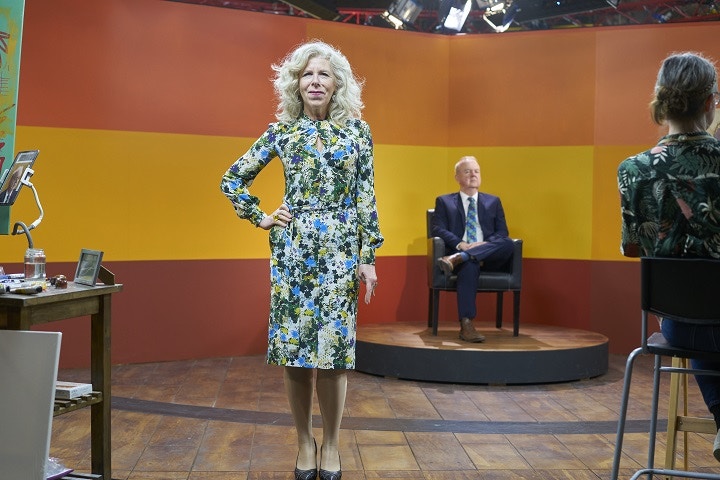
Kathleen Soriano
Hi Kathleen, thanks for taking the time out from your judging to chat to us. Is there anything you have learned from the show about what makes a great portrait?
In seven years of making the show I think I’ve come to realise that you want a perfect marriage between the sitter and the artist. And then as someone looking at the work, I want to see something ideally that I’ve not seen before, it’s not just about capturing the essence of that person or a good sense of the likeness, I want to see something that’s pushing the genre of portraiture on just that little bit further, so that they are adding to the cannon and I can feel really proud of ultimately making that one artist a winner and possibly going into a national collection in this country.
How does the programme boost the winning artists’ career?
The programme is huge for the winning artist. It really gives them a stamp of approval that they’ve got permission almost, to be the portrait artist that they probably know they’ve always been, but finally they’ve had that accolade given to them so it gives a confidence to these artists. I think a lot of them go on to make much better work as a consequence of that. It opens doors into collections into museums and galleries also to people top want to commission them to make portraits of their family, their children or their boss or chairman or something, so it can allow artists to become professional and for them to make art everything that’s in their life rather than feeling it’s just a hobby.
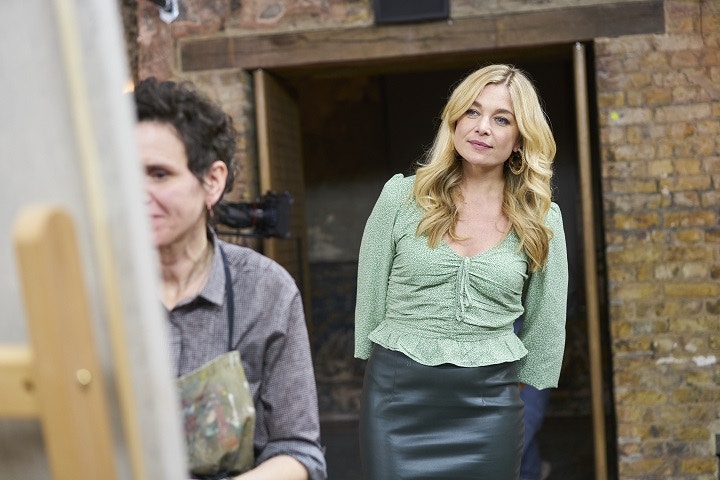
Kate Bryan
Hi Kate, thanks for letting us steal you away from the tense final! What are the most challenging parts of being a judge?
I love being a judge on Portrait Artist of the Year, but this is a really tough job! Every artist that comes onto this programme is good, you know, their submission is beautiful, interesting and complex, they know what they’re doing and so when we actually come to the competition sometimes you’re working with an artist who has just maybe not quite done what they needed to do in the time, or maybe they’ve overworked it and you still know they’re a great artist. It’s hard to let people go if you really love their submission, and sometimes I see an artist that I love so much and I have to kind of win Tai and Kathleen around and vice versa, so it’s a continual process of growing and evolving, you know art doesn’t stay still it’s not static so we’re constantly pushing forward and seeing new things, so it’s thrilling but it’s tough.
How important is it to bring an understanding of the painting process to the wider public?
I think one of the really beautiful things about Portrait Artist of the Year is that we get to see the artist create works before our very eyes, this activity is usually very private, and of course we’ve all made art as children, but we get to see people really with this amazing facility and their technical expertise. When we first started making the programme I don’t even think I’d really seen people paint properly in real life, on a studio visit you just talk the artist doesn’t make the work, so I think it’s amazing because it peels back that curtain, it’s informative and inspiring, I think it’s one of the most beautiful things watching paint dry!
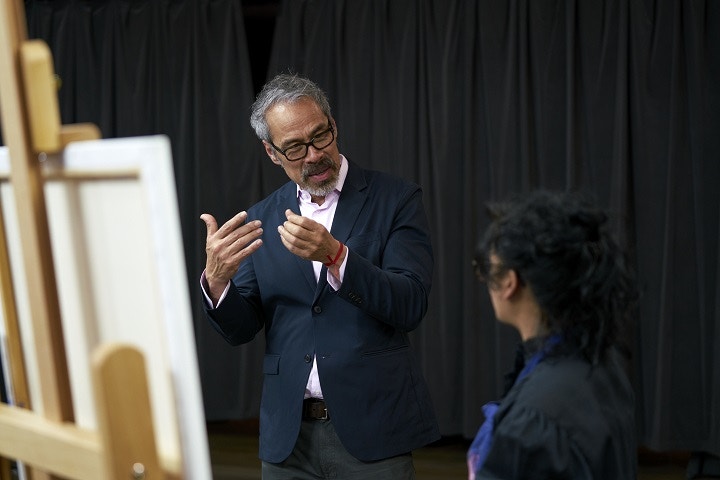
Tai Shan Shierenberg
Hi Tai, thanks for chatting with us today, as both a judge and a professional artist, do you have any advice for artists applying for the show? What are your top tips for applying?
Well my top tip is produce a great self portrait! What do I mean by that? It’s got to be memorable, but it’s also got to be truthful to the way you work. The thing is, we’re looking at around 1,800 digital submissions so when we look at them we need to be excited by what we see, but of course it has to be true to you because if you arrive at the competition and you’ve done something that may be out of your comfort zone, not only will you be exposed by performing, you’ll be painting a celebrity you haven’t met before, we’ll be asking you lots of questions all the time, it’s an exciting but stressful environment. So do something that’s true to you but do something that is ambitious, try something interesting, put in a background, make a narrative out of it, interesting lighting, different formats - we’ve had paintings that are tiny that pack a punch, big paintings that are gestural that draw us into the paintwork. Think outside of the box, but stay true to yourself.
What are your top tips for painting portraits?
Make a painting that speaks or shares the notion of what it’s like to be alive today; to be a thinking, emotional, active human being. That’s what we look at portraits to do, we want to recognise ourselves, or find something about ourselves as humans in them. Of course, make it an interesting painting that stands on its own when it’s not next to the person, it’s got to be an interesting artwork in itself. But it also has got to speak about how we all exist and how it feels to exist.
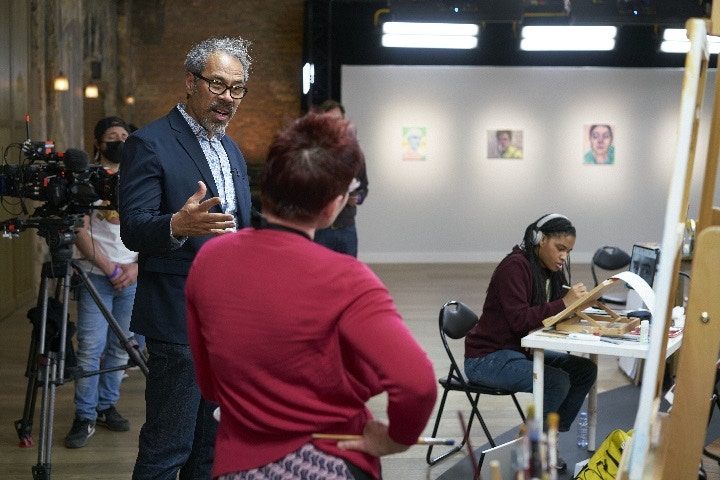
What excites you about shopping for art supplies and discovering new products?
I’m terrible in an art shop. I go in and I need a few things and I always come out with way too much. They’re just fabulous places, I like the smell of art shops. We create what we create within our own boundaries and to keep that interesting it needs to evolve, we need to experiment, and what’s great in an art shop is you might see something, a brush, a colour that would wouldn’t have thought of, or maybe you’ve been influenced by something else and you think, let’s give that a go - let’s give that Cobalt Violet a go in a face and let’s see whether that works. And sometimes it doesn’t work, but actually you’ve expanded your vocabulary and the starting point is the addiction in the art shop where you go to see all of these lovely things. There’s stuff there, it’s the tools of our trade and if you want to expand your vocabulary in the visual arts you’ve got to try out stuff, and what a nice place to start.
What are your five essential colours for a portrait?
You can paint a really good portrait with black and white. What you’re looking for is something with tonal variation. I say to my students, especially ones starting out that you should start with a reduced palette, so white of course, Cadmium Red, Lemon Yellow, Cobalt Blue or Ultramarine. I studied under Euan Uglow who made beautiful paintings out of those colours so you can do a lot with very little. I use Vermillion, Titanium White, Cobalt, Viridian, a bit of Paynes Grey, the options are endless, the idea is to start with a small vocabulary and as you feel comfortable extend it, but above all have fun.
Thanks again Kathleen, Kate and Tai, we’ll let you get back to it, and we look forward to seeing who you crown the next Sky Arts Portrait Artist if the Year!
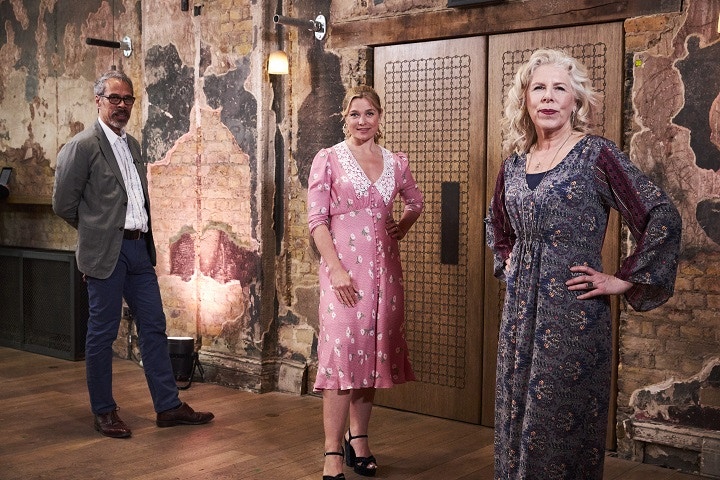
Feeling inspired?
Could you be the next Sky Arts Portrait Artist of the Year? Applications for Sky Arts Portrait Artist of the Year Series 9 close on 11th February 2022. For more information, and to apply visit skyartsartistoftheyear.tv/portrait. Read our interview with the Sky Arts Portrait Artist of the Year Series 8 heat winners to get some tips before you apply.
Image credits: Photography © Sky Arts, paintings © Storyvault.



